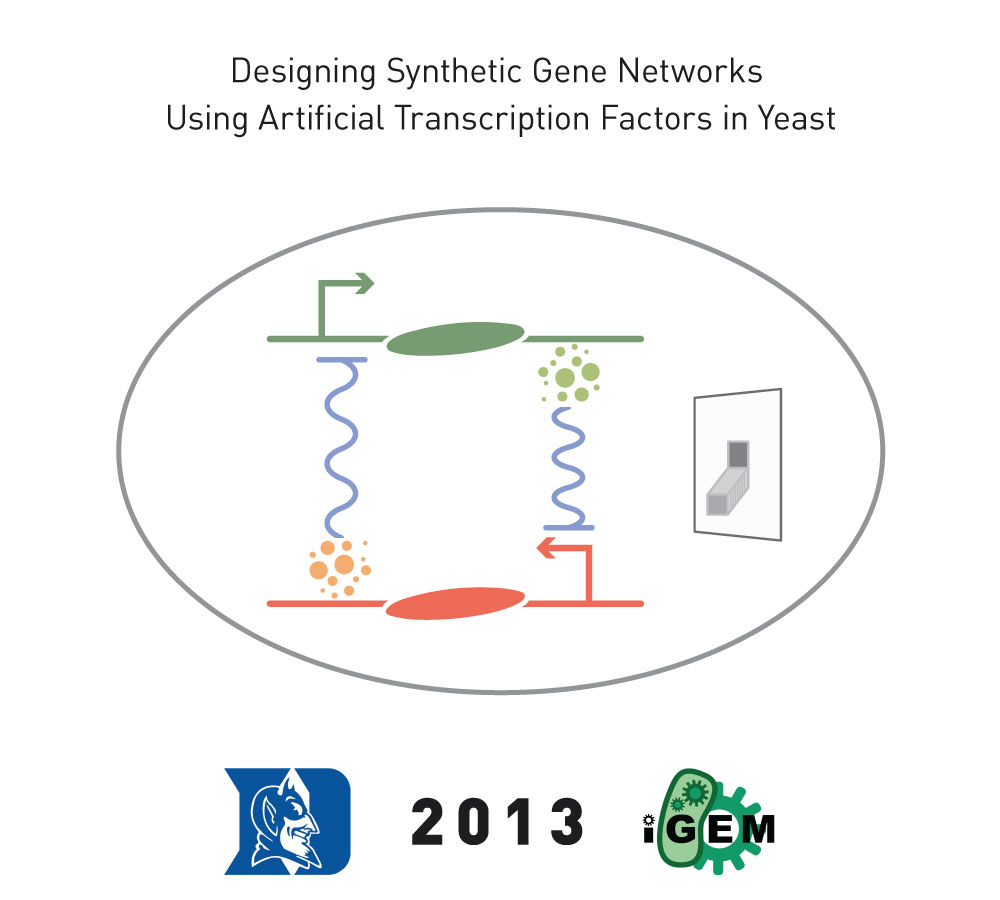|
|
| (20 intermediate revisions not shown) |
| Line 1: |
Line 1: |
| | {{Template:Team:Duke}} | | {{Template:Team:Duke}} |
| | | | |
| | + | <div class="right_box"> |
| | | | |
| - | {|align="center"
| + | [[File:MainGene.jpg|700px|center]] |
| - | |You can write a background of your team here. Give us a background of your team, the members, etc. Or tell us more about something of your choosing.
| + | |
| - | |-
| + | |
| - | |[[Image:Duke_logo.png|900px|center]]
| + | |
| - | |-
| + | |
| | | | |
| - | Project Description
| + | </div> |
| - | <br><br> | + | |
| - | Following an initial period of growth after the publication of the first synthetic
| + | |
| - | | + | |
| - | gene circuits, development in the field has stalled. This is due in part to the limited
| + | |
| - | | + | |
| - | number of well-characterized parts with desired features. For instance, the function
| + | |
| - | | + | |
| - | of the repressilator and genetic toggle switch both rely on repressible promoters
| + | |
| - | | + | |
| - | with high cooperativity – provided in these cases by multimerization of the
| + | |
| - | | + | |
| - | repressor proteins. The TALE family of transcription factors (TFs) and the CRISPR/
| + | |
| - | | + | |
| - | Cas9 system show promise in expanding the parts list to bind to near-arbitrary
| + | |
| - | | + | |
| - | target sequences, but because they bind to DNA as monomers, promoters under
| + | |
| - | | + | |
| - | their control cannot show cooperativity in their response.
| + | |
| - | | + | |
| - | <br><br>
| + | |
| - | It has been shown theoretically and in vivo that repressors binding as monomers
| + | |
| - | | + | |
| - | to multiple binding sites can introduce cooperativity in to a system. With this
| + | |
| - | | + | |
| - | in mind, we are developing an organism-independent approach that leverages
| + | |
| - | | + | |
| - | programmable TFs to create library of independent and orthogonal repressorpromoter pairs with a range of expression parameters (viz. cooperativity, basal
| + | |
| - | | + | |
| - | and maximal expression rate, response time) of potentially unlimited size. It is our
| + | |
| - | | + | |
| - | aim that this approach will enable the field to move beyond toy circuits and begin
| + | |
| - | | + | |
| - | exploring higher-order dynamics.
| + | |
| - | |-
| + | |
| - | |[[Image:team_test.png|border|500px|center|Your team picture]]
| + | |
| - | |-
| + | |
| - | |-
| + | |
| - | |align="center"|[[Team:Duke | Team Duke]]
| + | |
| - | |-
| + | |
| - | |}
| + | |
 "
"











